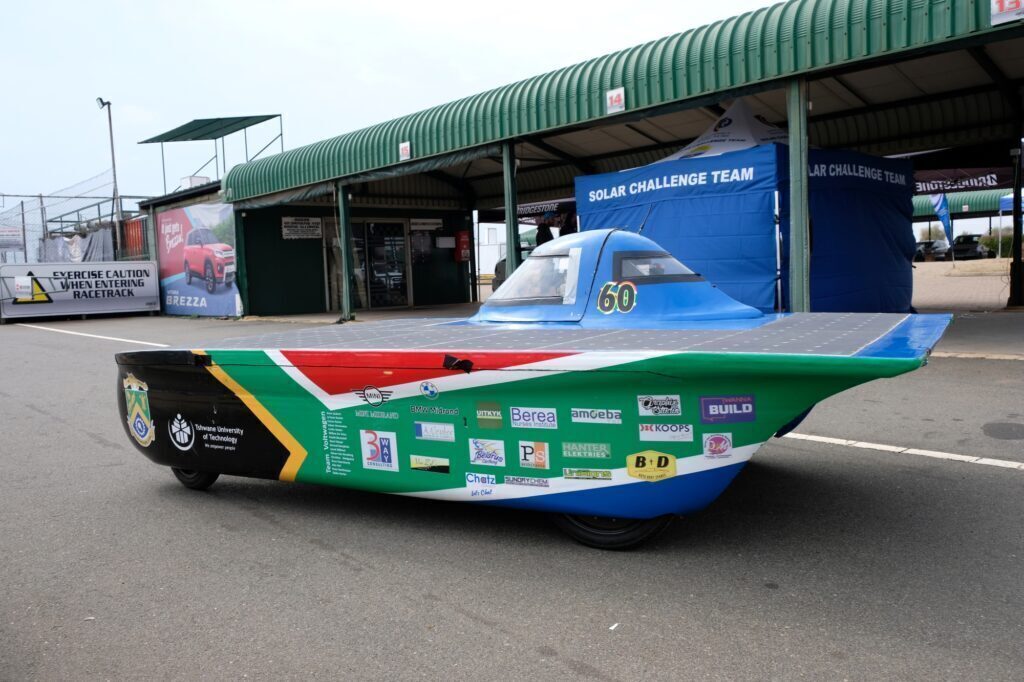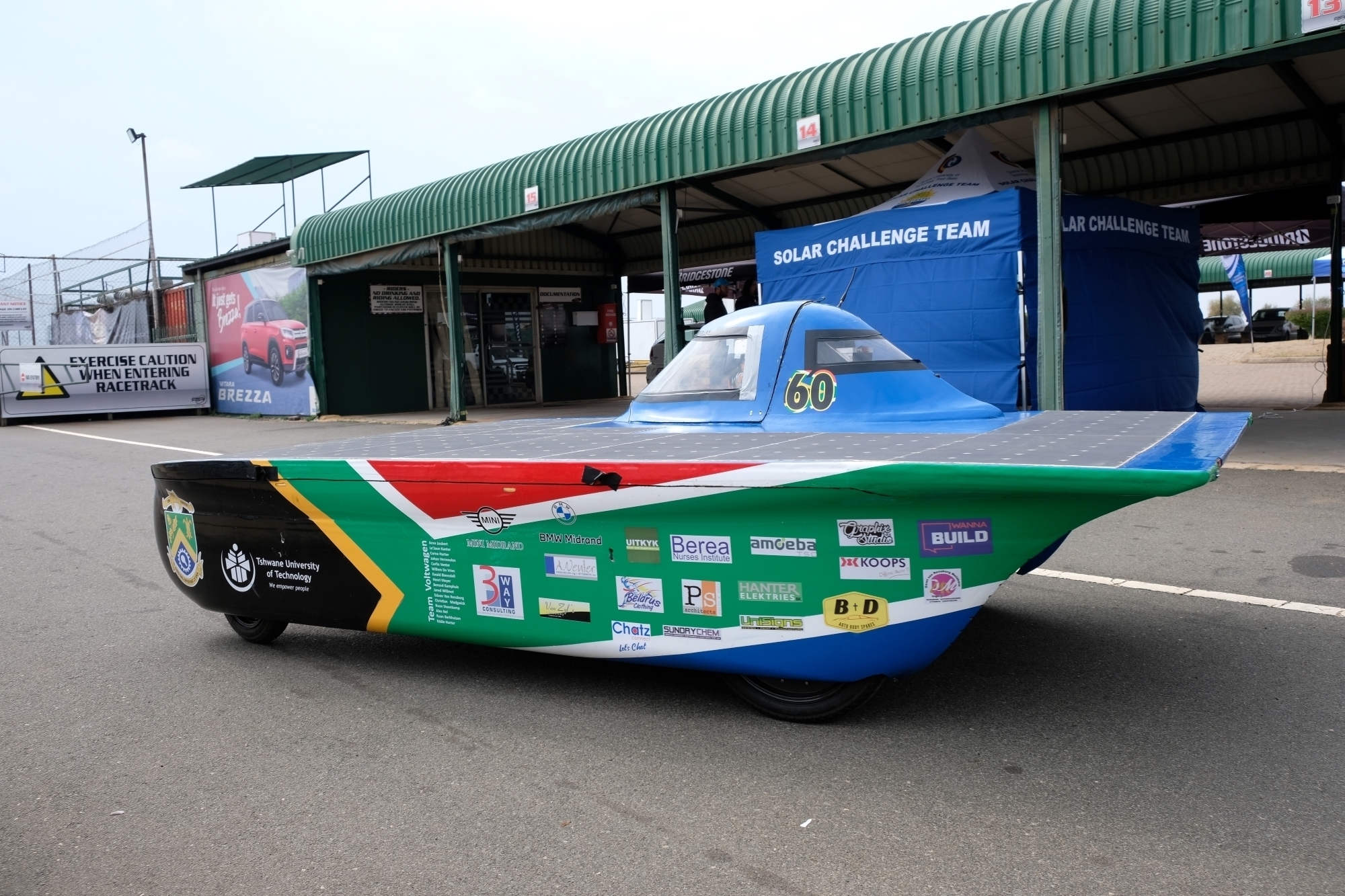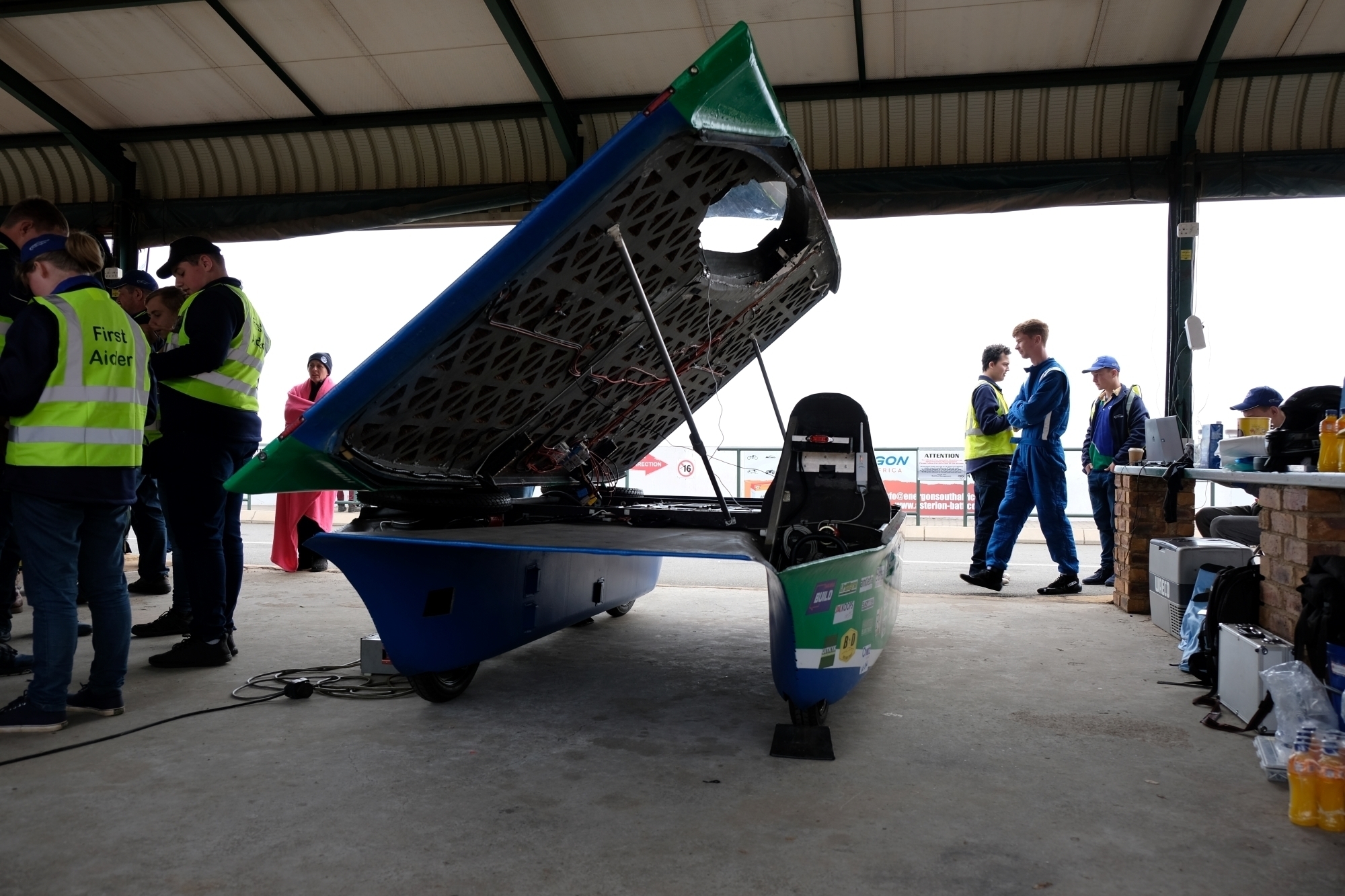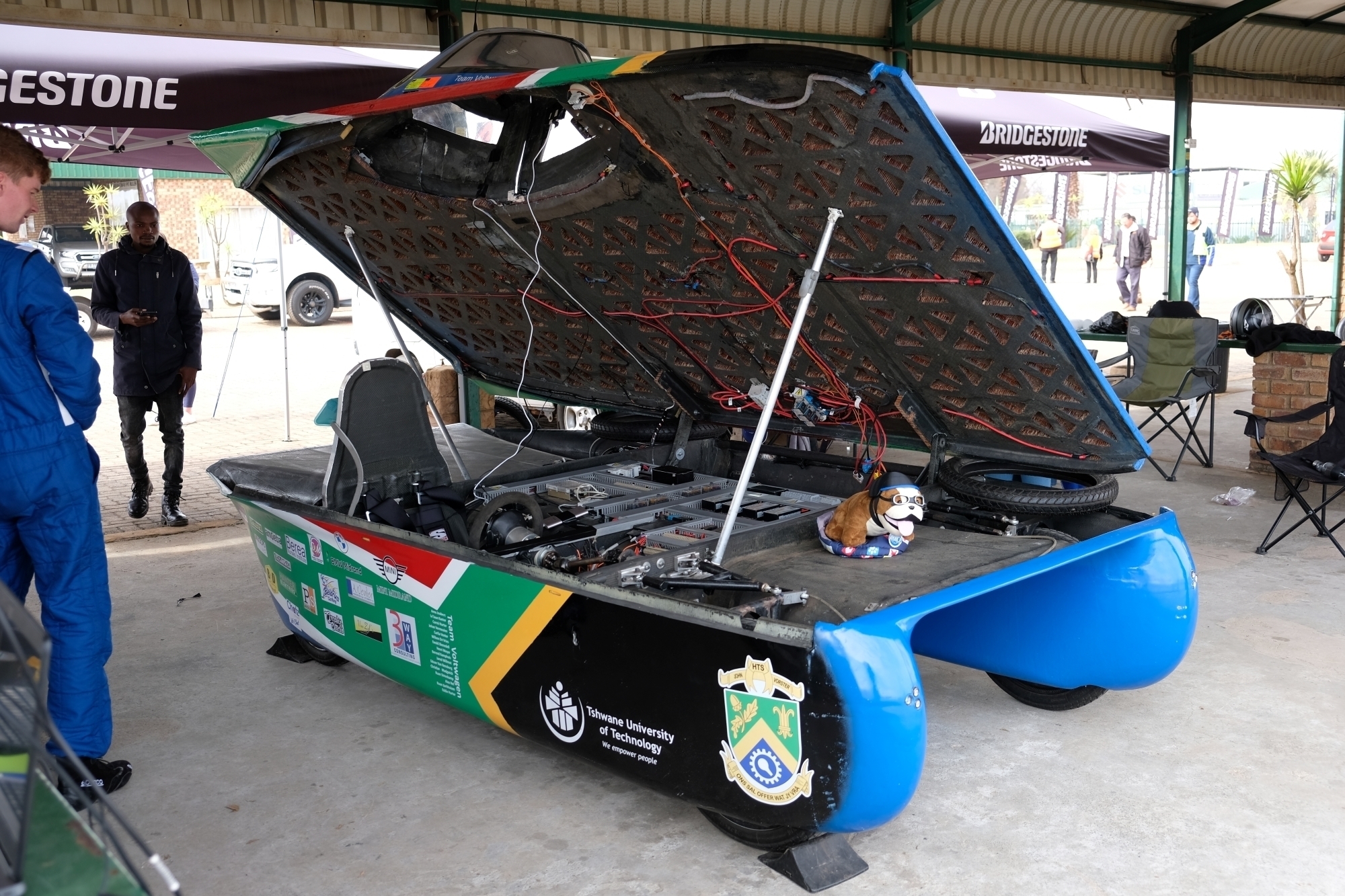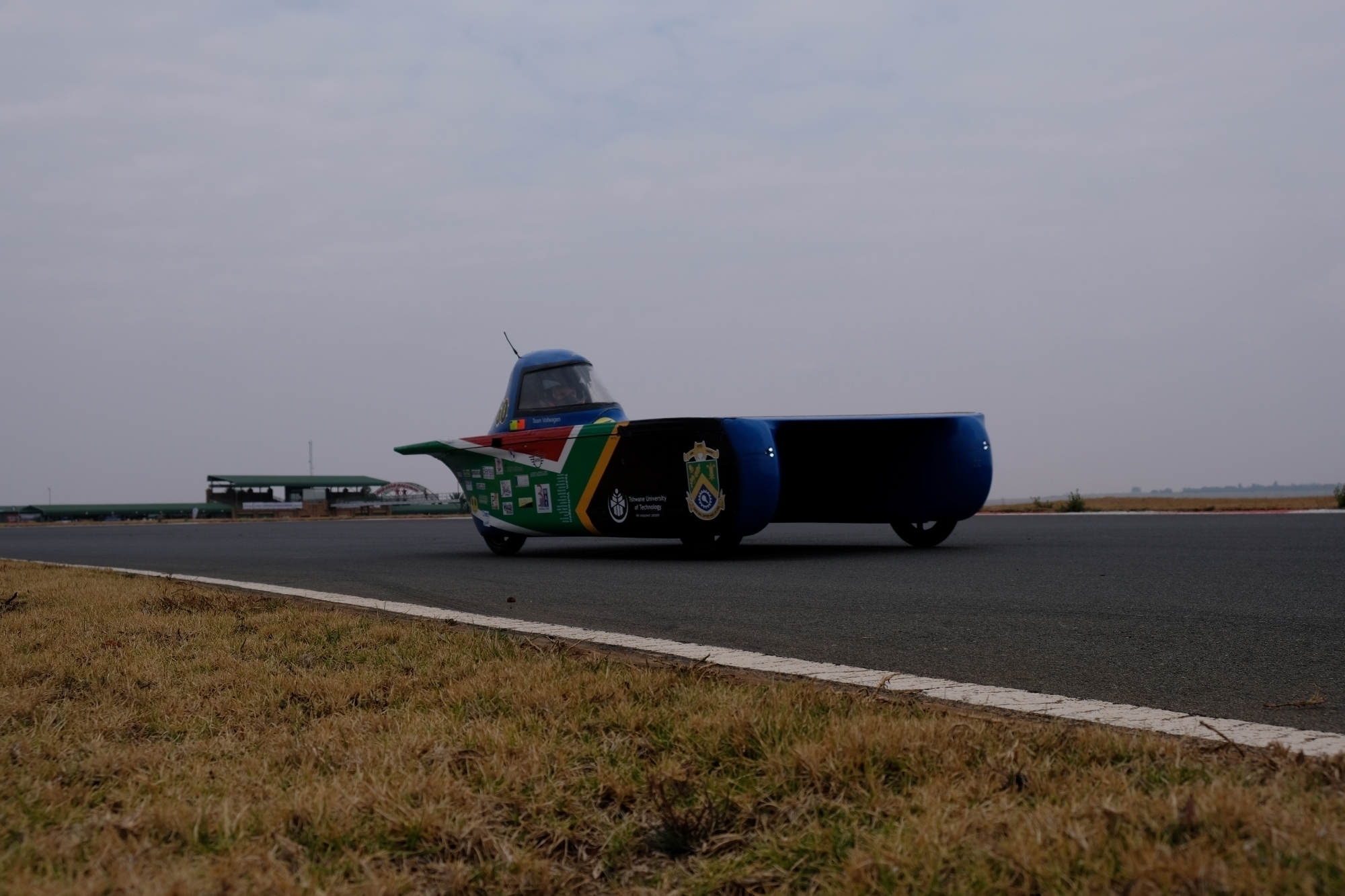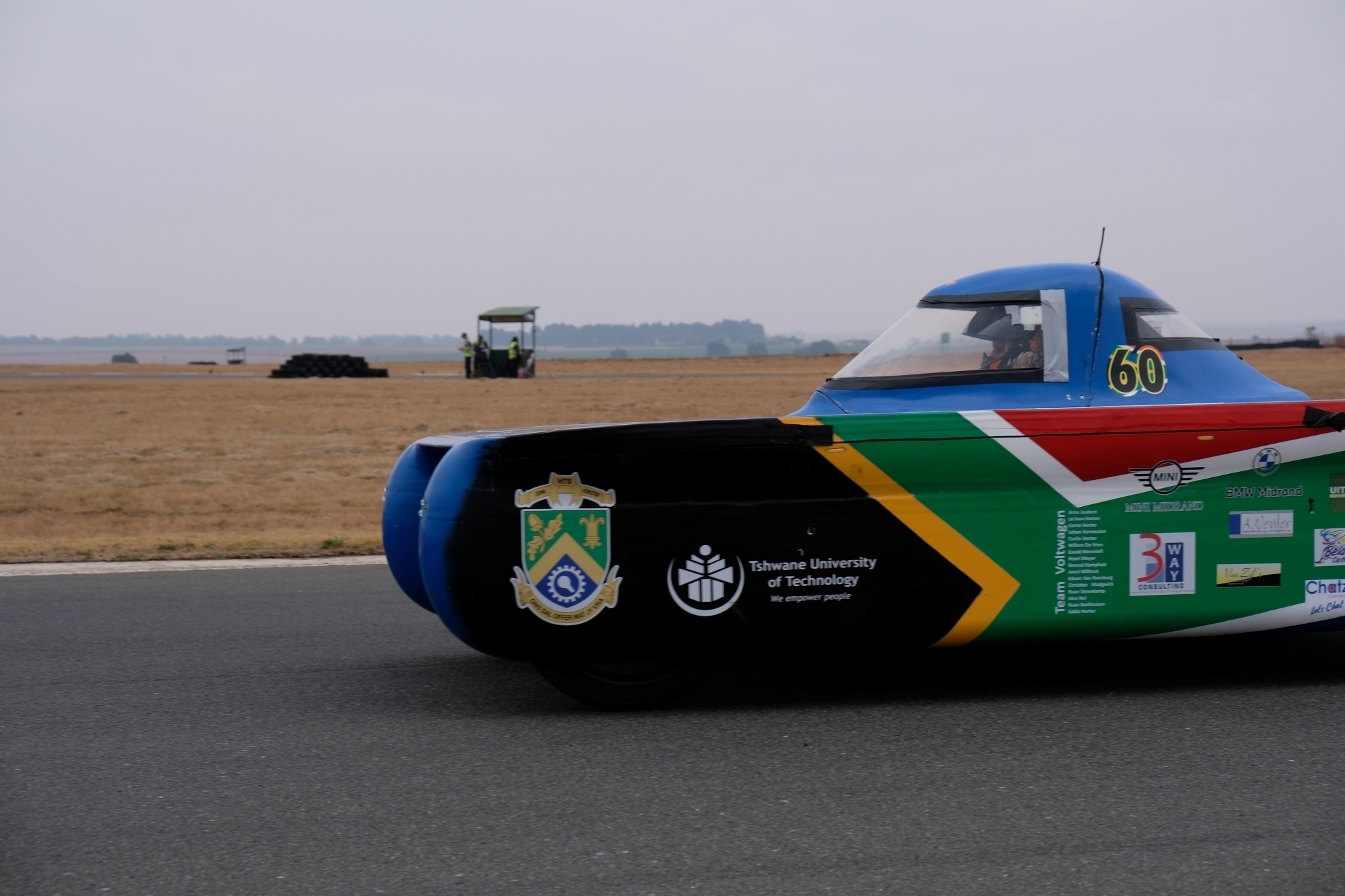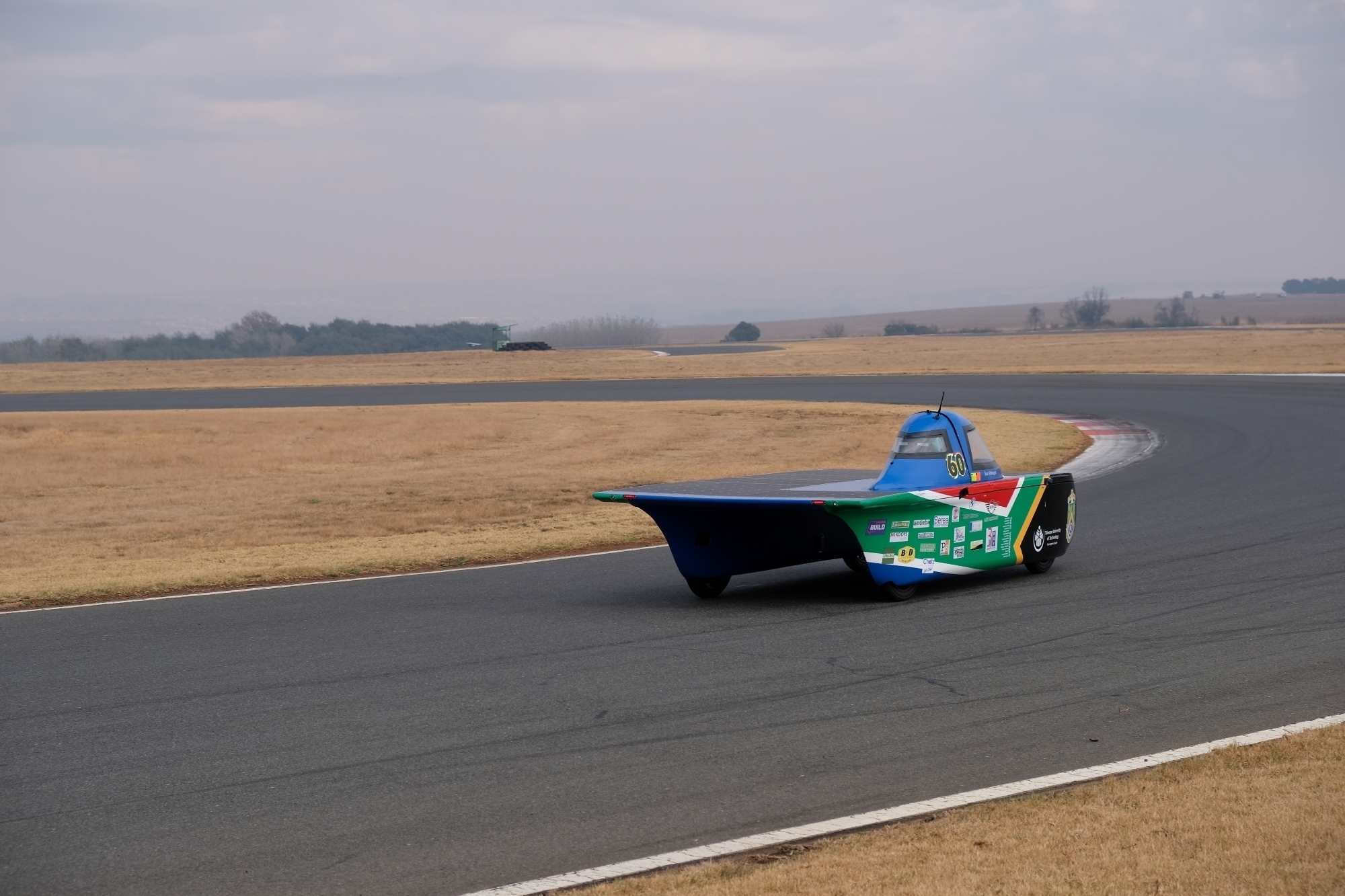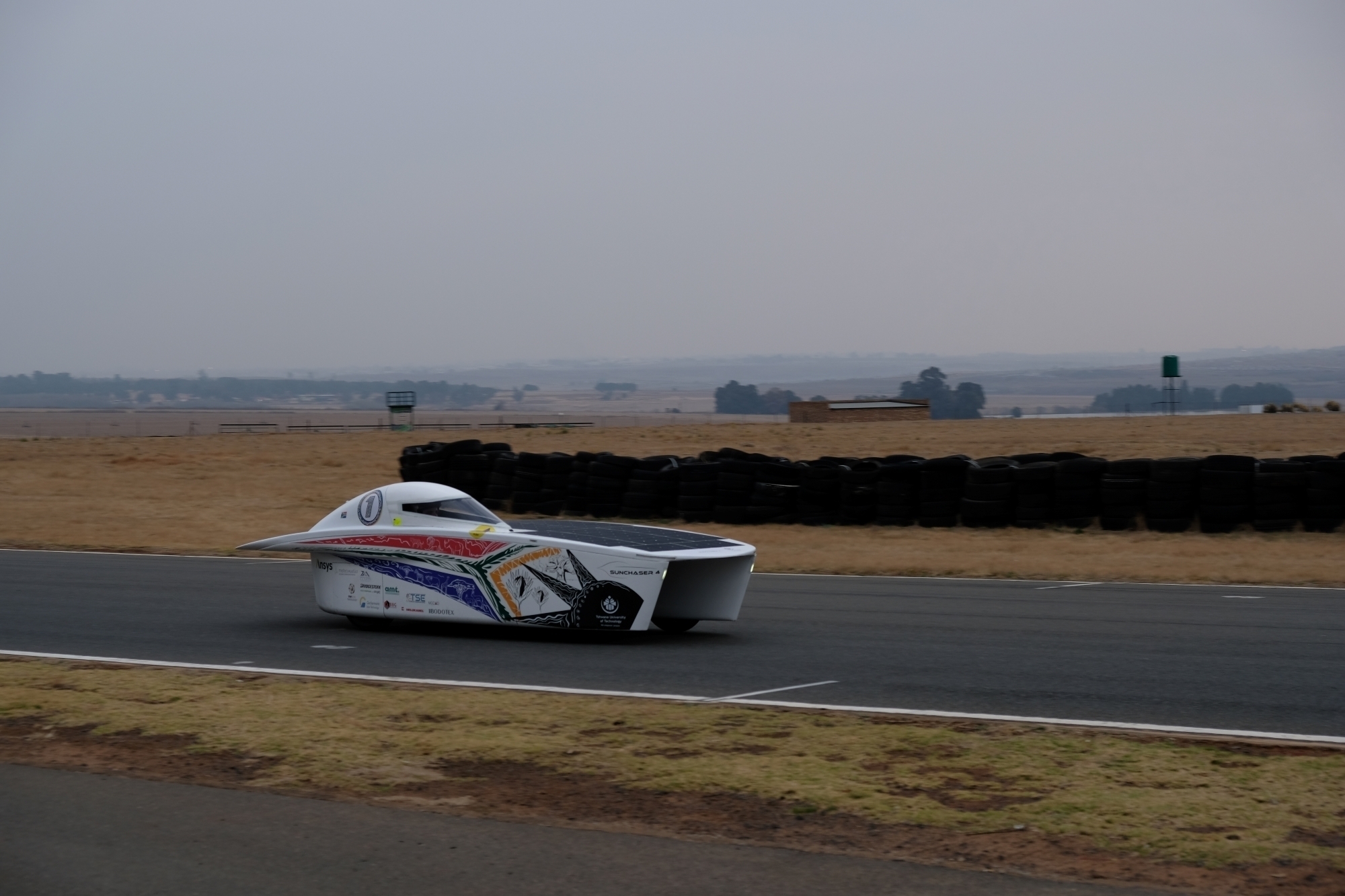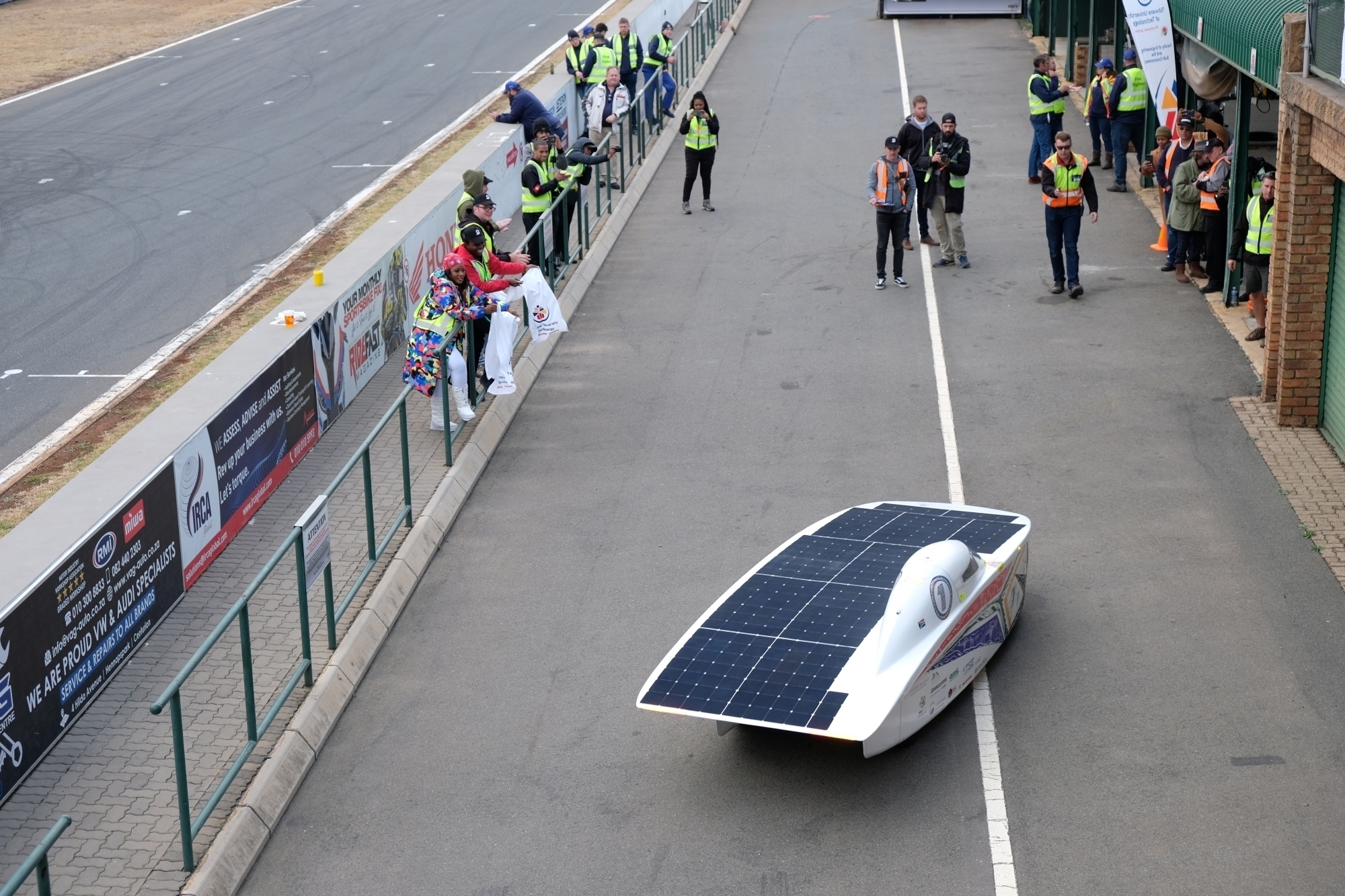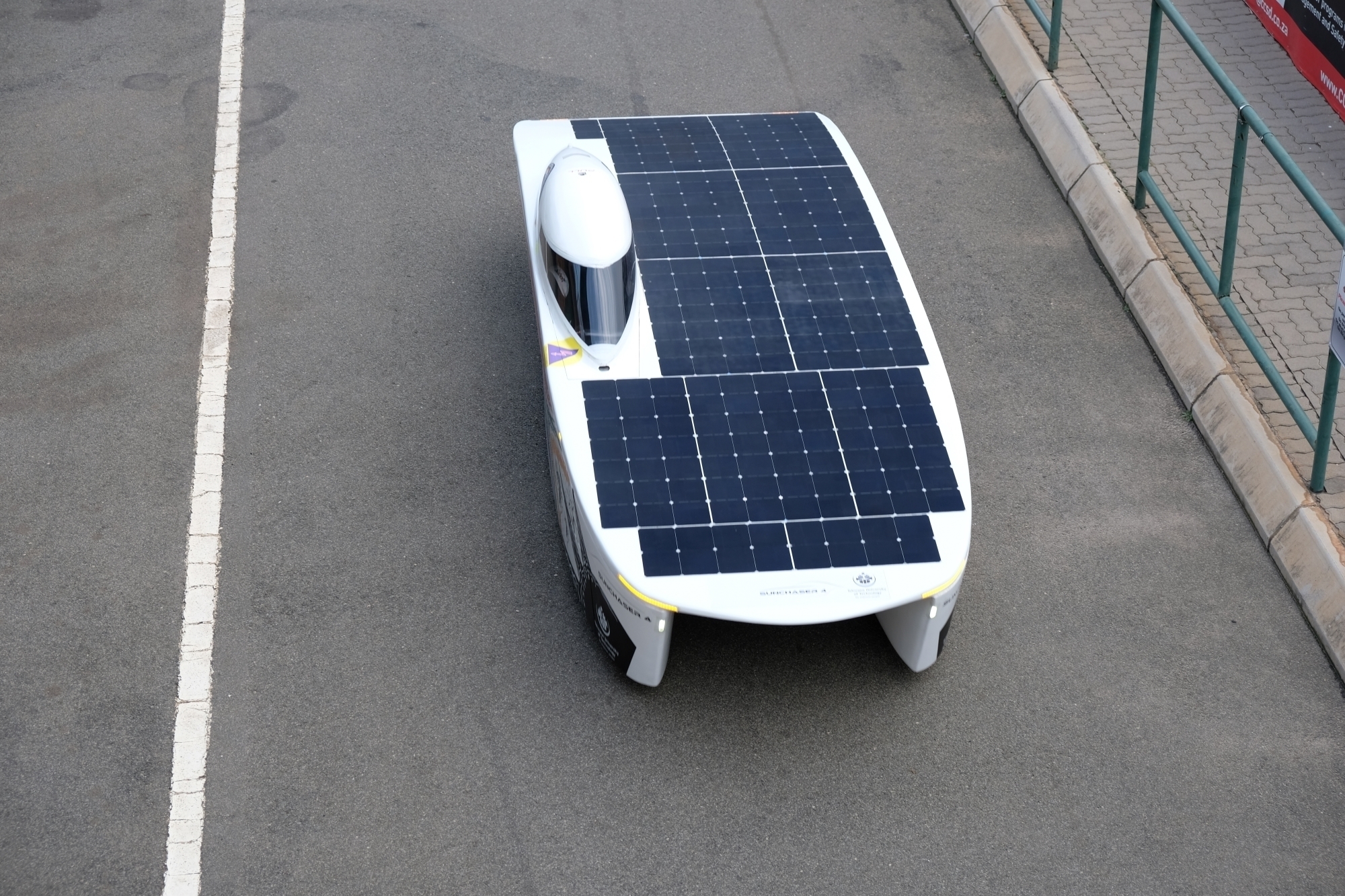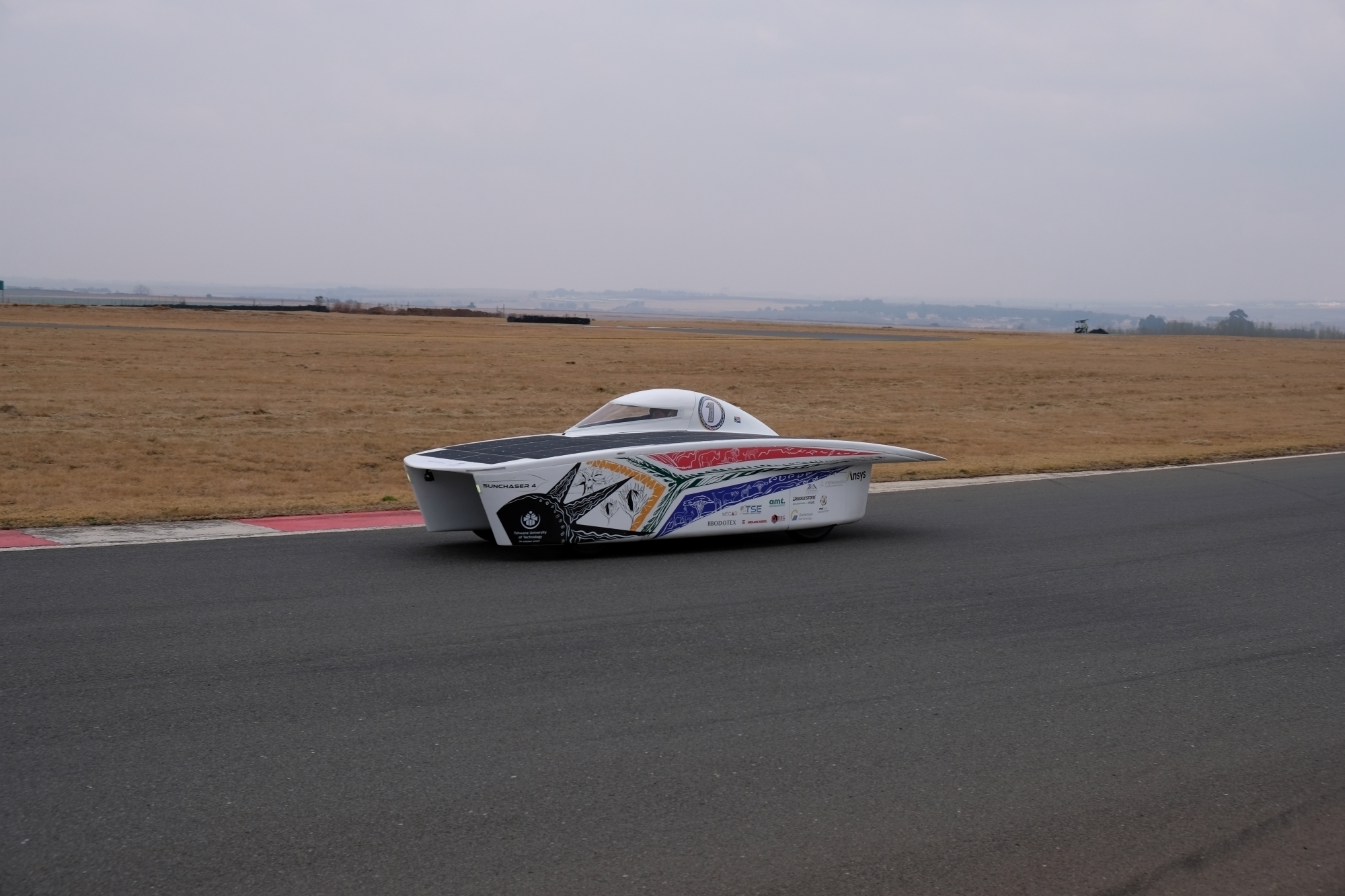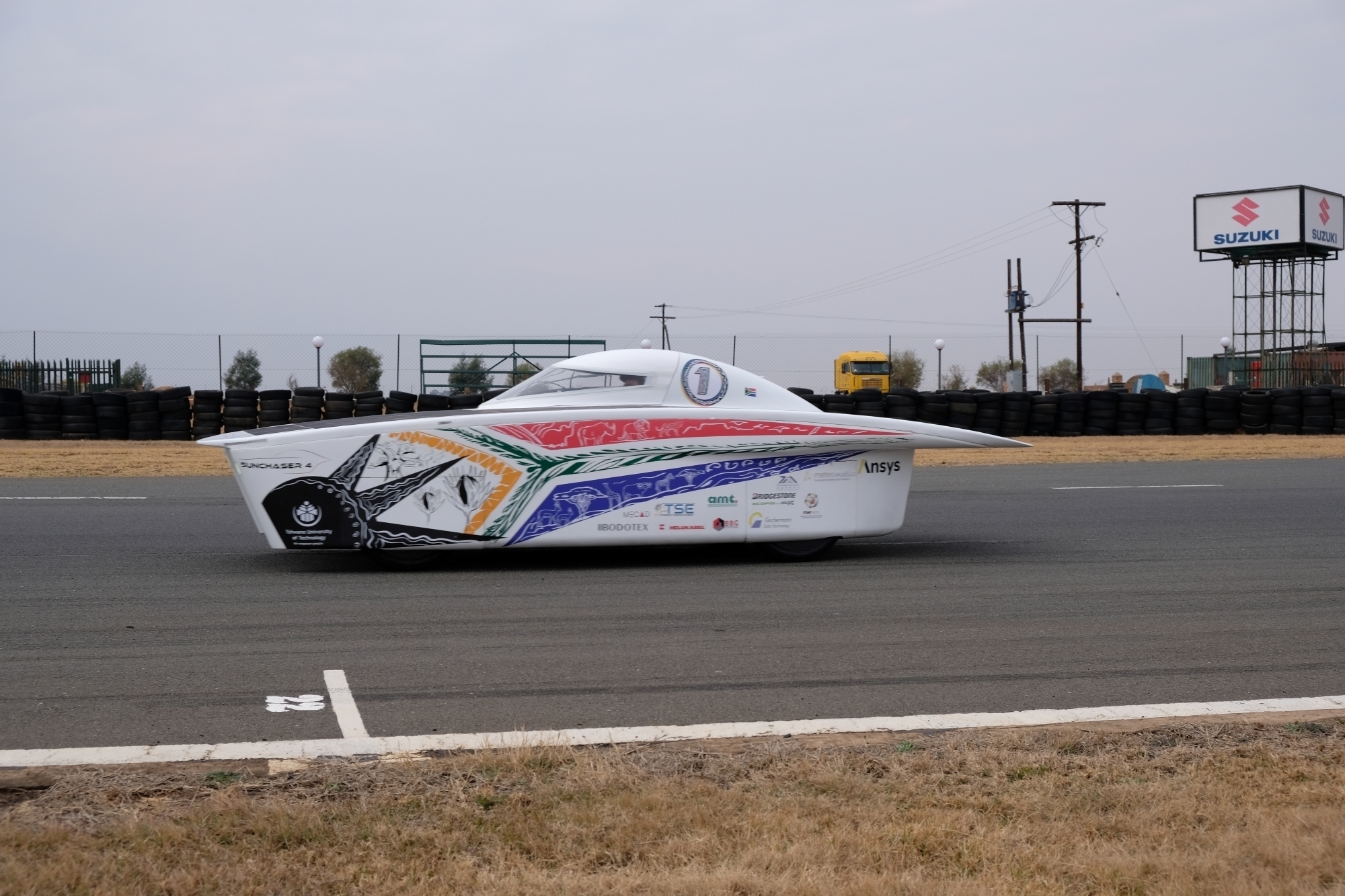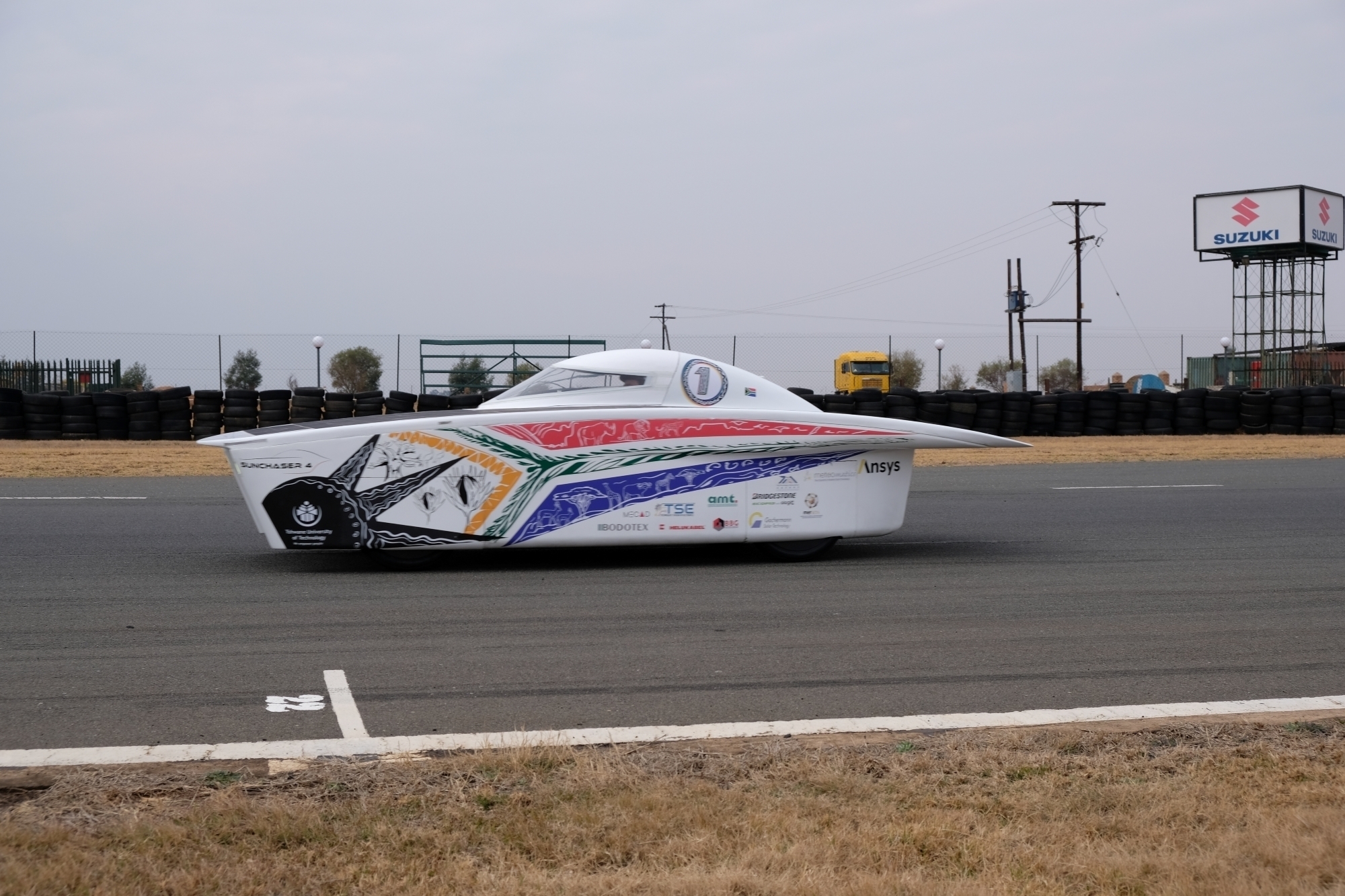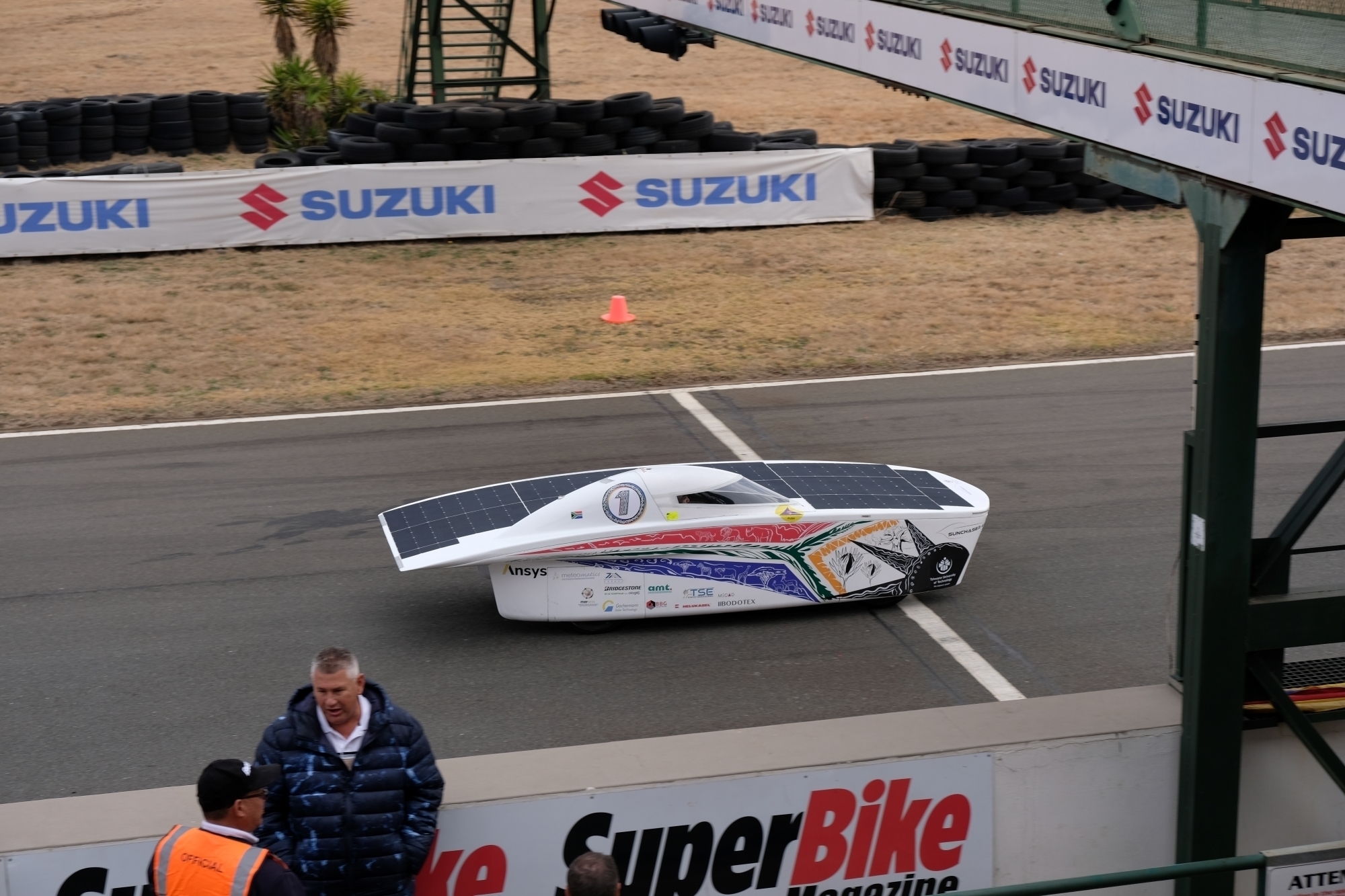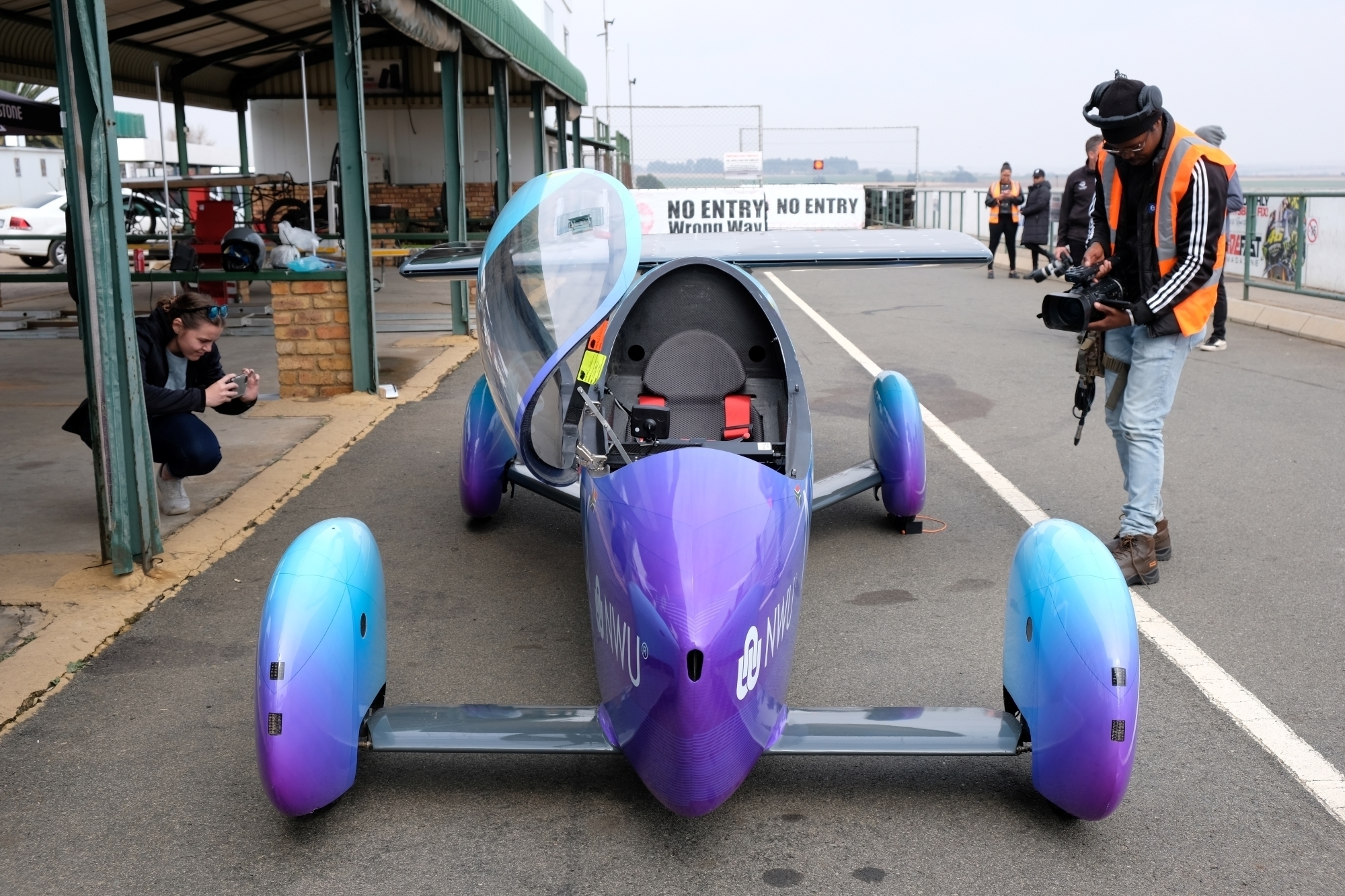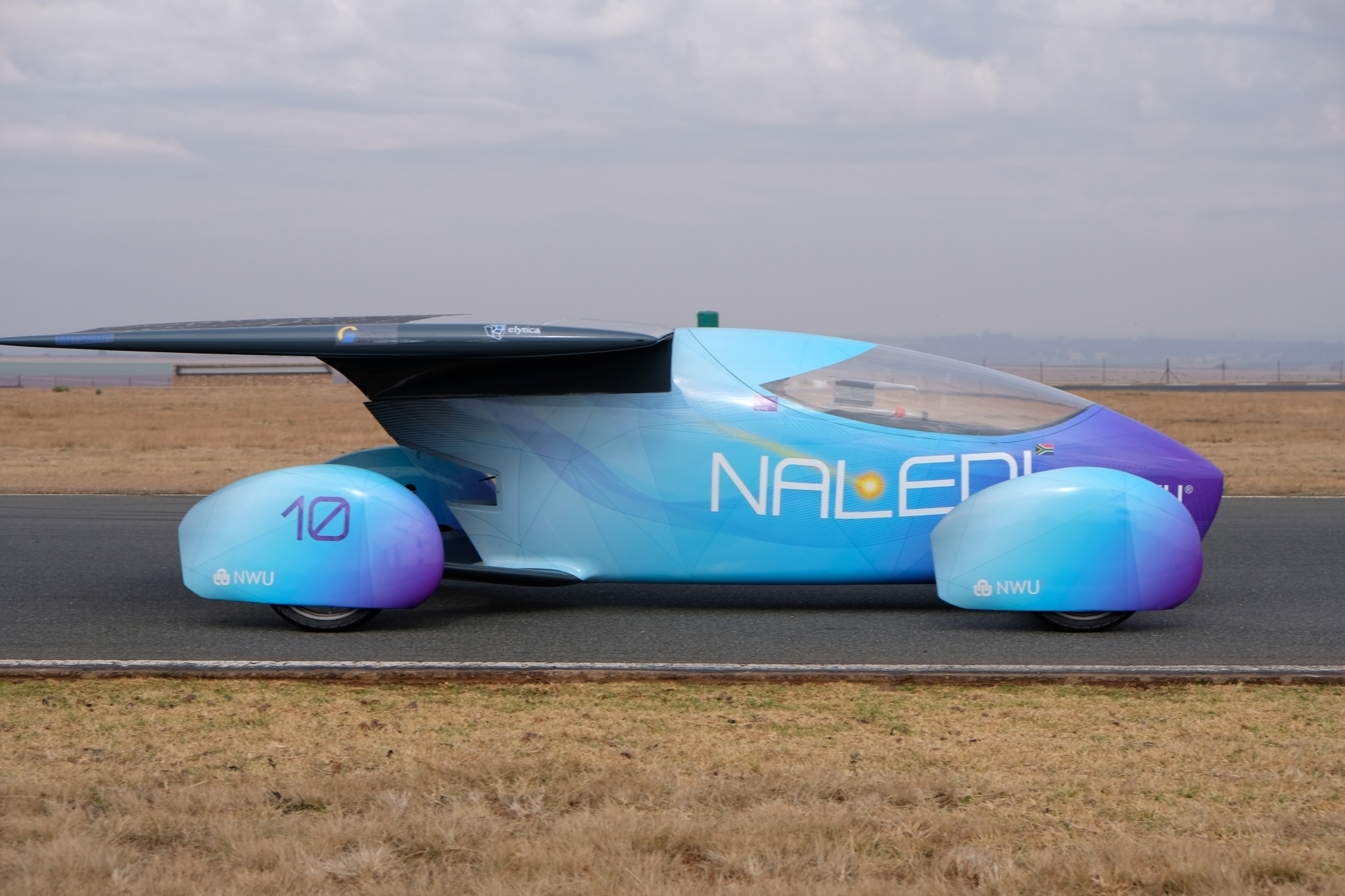Yesterday, Stuff visited the very first Ilanga Cup, which took place at the Red Star Raceway. What is the Ilanga Cup, we hear you ask? In its simplest form, it’s an endurance race between solar-powered cars. Yes, solar-powered cars. The point of the Ilanga Cup isn’t to finish first. The cars are built to go long distances, and that’s what they were there to test. Not speed, but distance.
Three teams (out of six that were due to compete) attended the Cup, drawn randomly between twenty universities, high schools and private engineering teams. At the event were North West University (NWU), Tshwane University of Technology (TUT) and Hoerskool John Vorster. The competing teams weren’t playing for money, but rather for pride and experience.
The Ilanga Cup was created so that the teams could test their cars in a competitive setting while learning from any mishaps along the way. The Ilanga Cup is just a stepping stone for the real thing; the Sasol Solar Challenge. And, for a wider audience, the Ilanga Cup promoted renewable energy and the sport of solar car racing. Many aren’t aware that challenges like these exist. The Ilanga Cup hopes to change that.
Meet the Cars
The first words that come to mind when you see the cars are ‘The Jetsons’. The cars look as if they travelled to the future and returned to show us the benefits of renewable energy. They’re also tiny, and that’s by design.
The teams work to make each vehicle as small and light as possible. Of course, it can’t be too small – there still needs to be space for as many solar panels as possible. Each car is also packed with lithium-ion batteries, which store energy used to race. That’s more or less standard, but it’s the vehicle design that’s most interesting.
Naledi 2.0
We’ll begin with NWU’s car, which has a design that isn’t completely bonkers. Known as the Naledi 2.0, it’s the team’s second car It improves on Naledi 1.0’s design. The first car featured a similar shape but it held six square metres of panels instead of four.
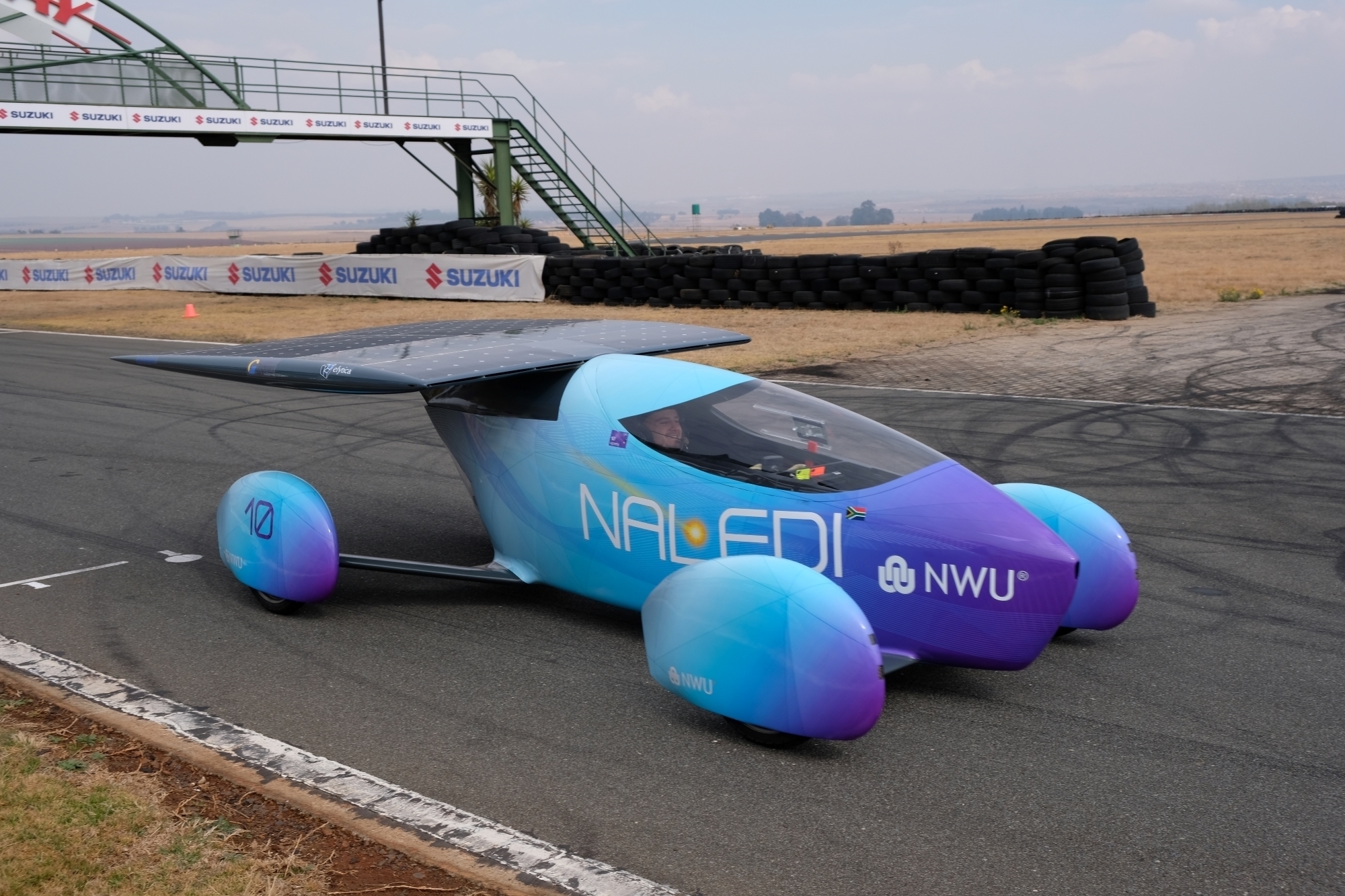
The body is as small as it can be to avoid any drag. The aerodynamic design helps in that department as well, making it look like an apprentice flying taxi. Now for the strangest part. Naledi 2.0 only stands around half the height of an average person. Like we said, these are being built small.
The Voltwagen
The Voltwagen is where things get weird. This vehicle comes from Hoerskool John Vorster, although it wasn’t designed from scratch by the high-school students. It was donated by TUT’s team a few years back, allowing the amateur team to improve on it while getting a taste of the industry. It was TUT’s first vehicle design, and Hoerskool John Vorster has spent two years making modifications to it.
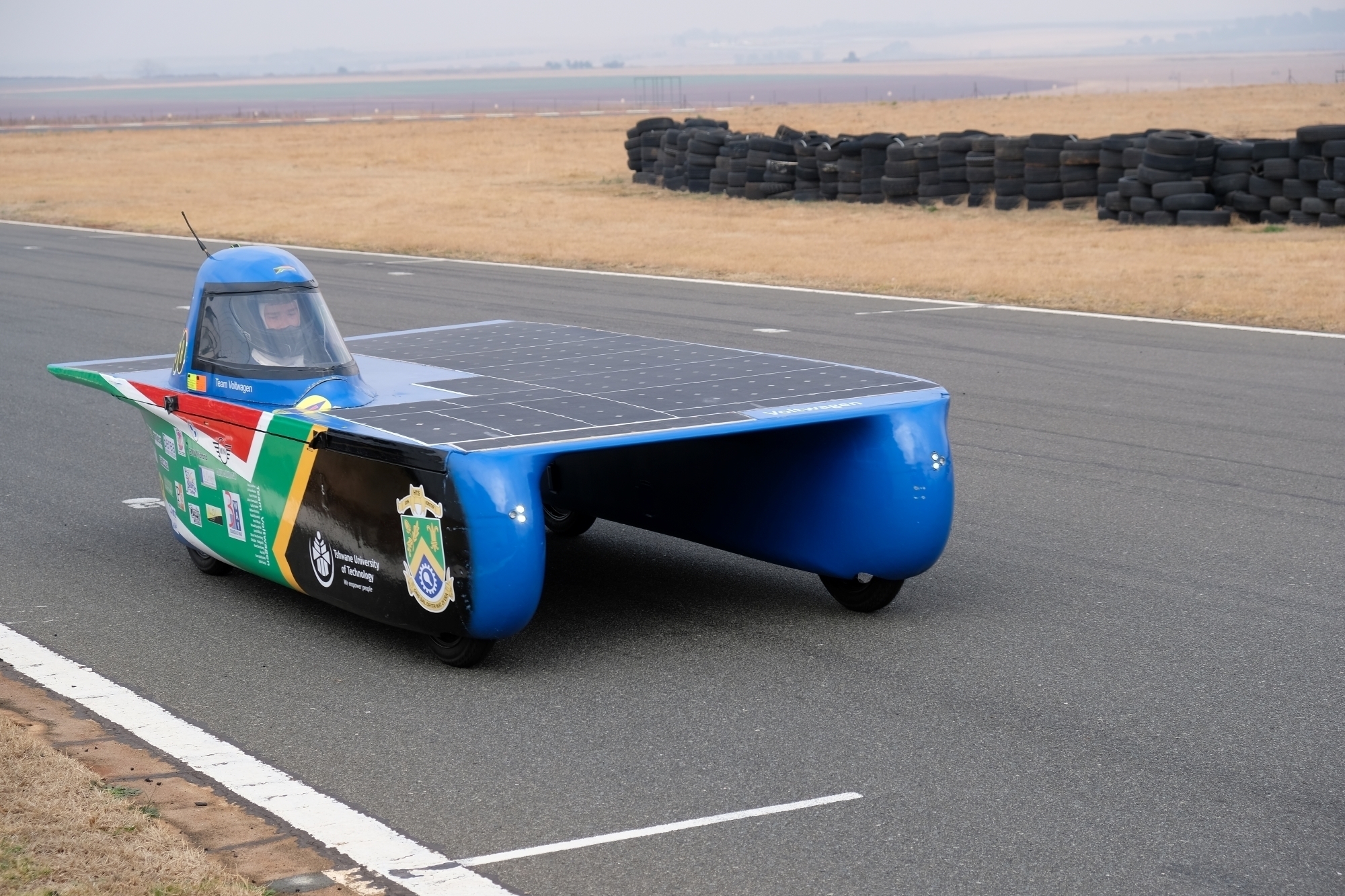
It features an eccentric design. It’s completely open down the middle, which should help with wind resistance. It also performs a decent impression of a catamaran in the process. The entire top is covered with solar panels, intended to capture as many rays as possible.
The Sunchaser 4
Lastly, there’s the Tshwane University of Technology’s entry – the Sunchaser 4. It shares the same design as the Voltwagen. This is hardly surprising — the Sunchaser 4 is an evolution of the Voltwagen. The design has been refined a little further, with sharper edges and better aerodynamics. Instead of a catamaran, we’re looking at a twin-hulled powerboat. Except it’s not quite that fast.
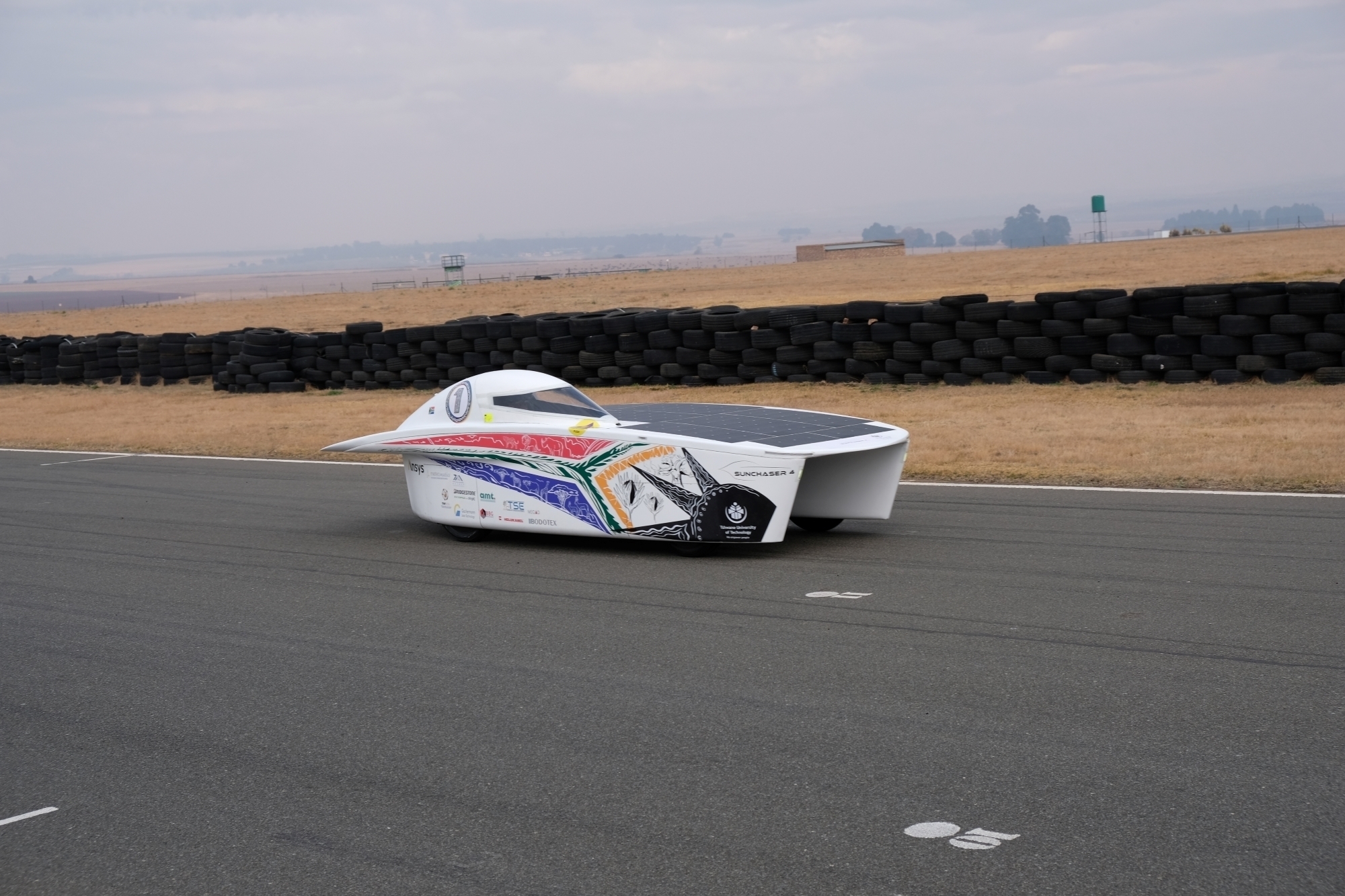
The Race
The entirety of the Ilanga Cup took place on 21 June, from 8 AM. The track at Red Star Raceway is 4.2km long, with several straights and corners. This track is ideal for an event like this, as the corners aren’t too tight for solar-powered cars to handle.
The day started well, with enough sun to get the cars out of the pits and onto the track. All three teams immediately began putting laps in. Teams were expected to change drivers once every two hours. This is done so drivers don’t become too fatigued to continue driving.
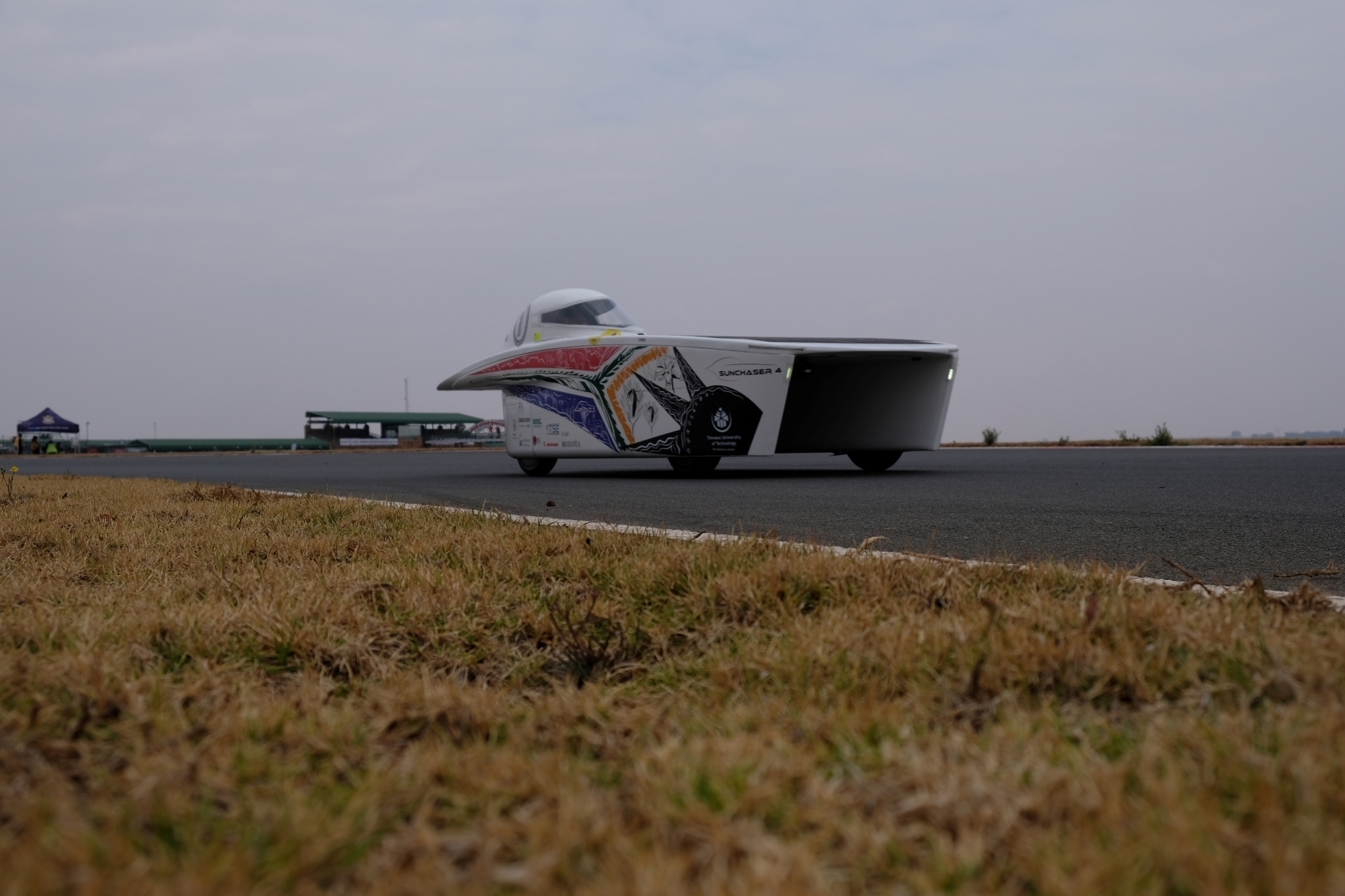
Eventually, the teams conducted their first pit stop, with the Sunchaser and Naledi 2.0 continuing five minutes later. The Voltwagen had the misfortune of stopping a little longer than expected, in order to charge its batteries.
By midday, the sun disappeared behind the clouds, causing some panic among the teams. Pit stops took longer thanks the missing sun, but nobody was idle longer than the Sunchaser 4. The solar-powered vehicles soldiered on, despite the overcast weather.
Eventually, 4 PM rolled around, marking the end of the race. The teams packed up, awaiting the winner’s announcement. To the spectators, it was clear who the winner was going to be before the event even neared completion.
The Winners
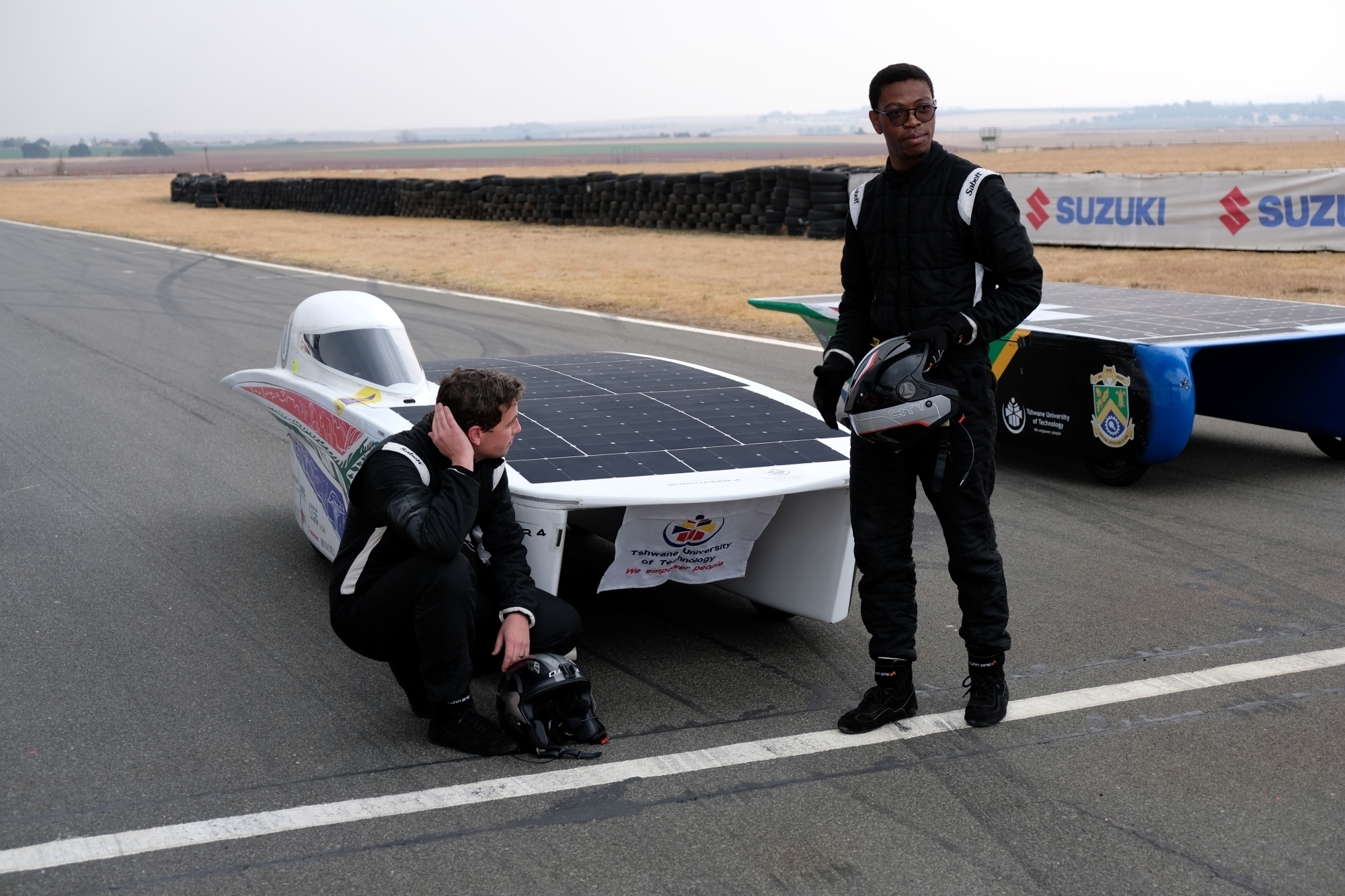
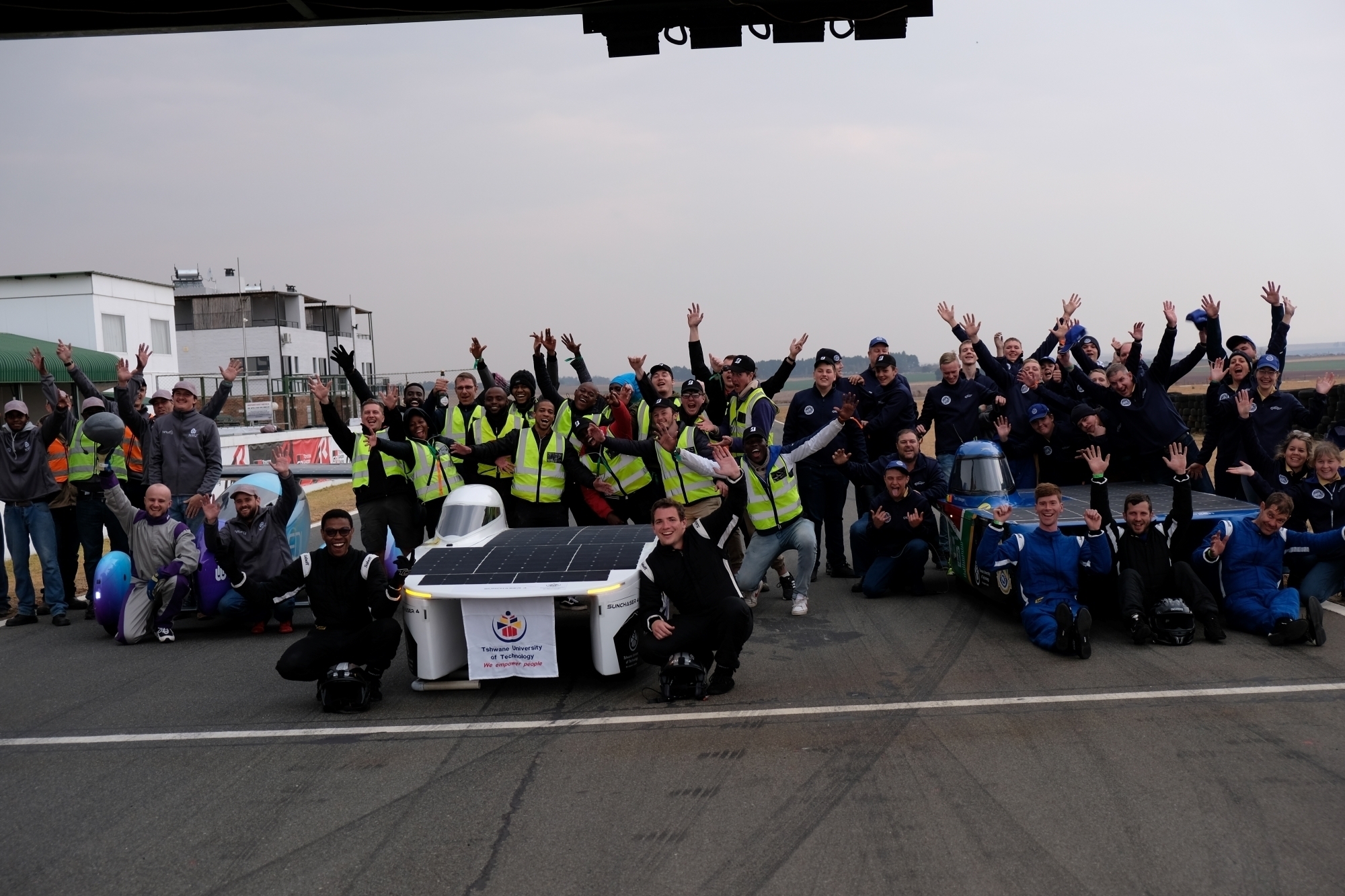
To nobody’s surprise, the winning team was the Tswane University of Technology, with its Sunchaser 4 beating the competition comfortably.
Third place was Hoerskool John Vorster, whose Voltwagen managed a respectable 25 laps around the 4.2km track. The team was let down by the need to pit and charge more than both other teams.
Second place was the Naledi 2.0, built by NWU, which went around the track 38 times.
The winner’s Sunchaser 4 finished the day with a whopping 93 laps. This included the five-minute mandatory pit stops every two hours. The car kept an average speed of 48km/h, and an appreciable top speed of 101km p/h. The Sunchaser was the most refined vehicle and had the most experienced team working on it.
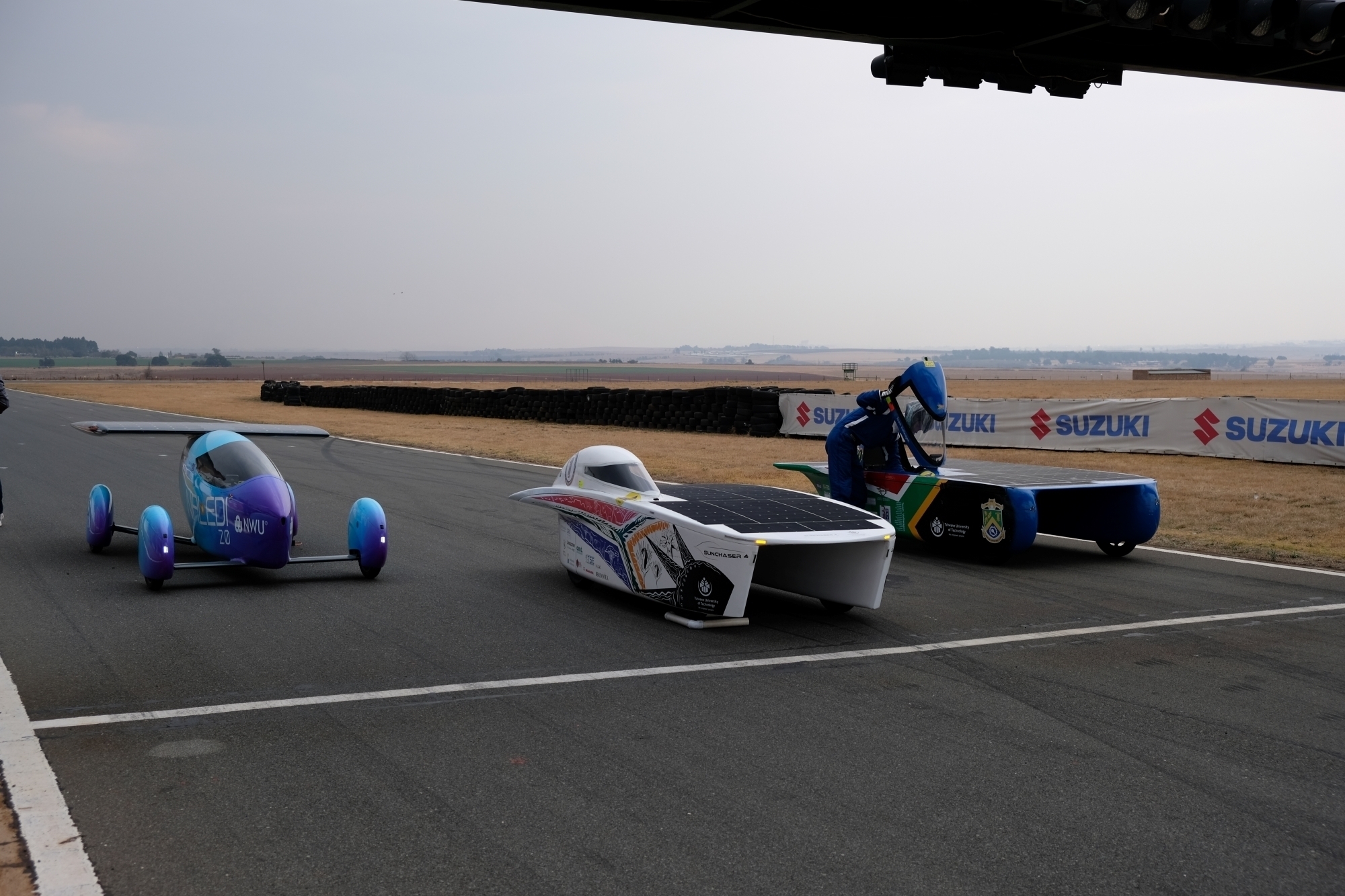
Read More: South Africa’s first major solar and battery power projects have started construction
The winners weren’t awarded any monetary prize, because that’s not what the Ilanga Cup was about. The event intended to give these teams a chance to put their creations in a real-world situation and test their limits. TUT did win a beautiful-looking trophy for their efforts.
All three teams will feel confident in entering the Sasol Solar Challenge, the largest in South Africa. The Sasol Challenge focuses on covering much larger distances, like from Johannesburg to Durban, all while contending with real-world traffic.
Eventually, all the teams will attempt the Bridgestone World Solar Challenge, in Australia. This is the magnum opus of the solar challenge community.
You can get a closer look at the teams and previous models through the years here.

